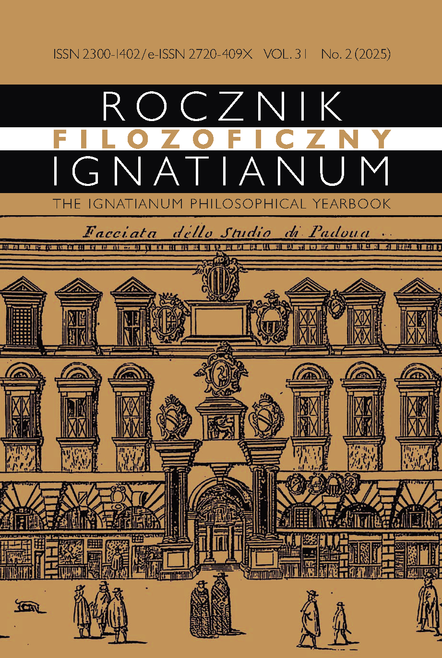Factors Determining the Accessibility of Urban Spaces for Everyone
Abstract
The article aims to analyze and compare the key determinants of the systemic implementation of universal design in urban spaces. The research clarifies the concepts of system-based approaches and effectiveness, and discusses the necessary criteria and outcomes to achieve them. The effectiveness of universal design is analyzed through three main approaches: the implementation of universal design according to the PN-EN 17161:2019 standard; design for all based on the HUMBLES method; and inclusive design adopting the Head, Heart, Hand approach (Empathy, Clarity, Creativity) and the Design Thinking methodology. The article presents three accessibility implementation tools used in select European countries. In the United Kingdom, it is the RIBA Outlay Inclusive Design Outlay. In Ireland, it is the Disability Access Certificate. In Poland, it is the Model Accessibility Description employed in Warsaw. The article examines the extent to which each tool addresses user needs and evaluates the impact of such an approach on the effectiveness of actions. The final section of the article presents the results of a doctoral thesis titled A Systemic Approach to Implementing Universal Design and Architectural Accessibility Standards in Warsaw, which analyzed factors shaping universal design implementation mechanisms. Interpretations of the PN-EN 17161 standard and the Accessibility Strategy developed by Historic England showcase effective strategies for systemic accessibility implementation.
References
Aragall Francesc, Montaña Jordi, Universal design. The HUMBLES Method for User-Centred Business (London: Taylor and Francis, 2016).
Aragall Francesc, Neumann Peter, Sagramola Silvio, ECA for Administrations (Luxembourg: EuCAN – European Concept for Accessibility Network, 2008), www.eca.lu (dostęp: 05.08.2024).
Chmielewski Jan Maciej, Teoria i praktyka planowania przestrzennego. Urbanistyka Europy (Warszawa: Oficyna Wydawnicza Politechniki Warszawskiej). DAC application, Possible Format for the layout of a DAC application. Dwelling Units (Flats & Apartments). Part M 2010 (Cork, 2016), https://www.corkcoco. ie/sites/default/files/2022-01/sample-format-for-dac-report-dwelling-units-pdf.pdf (dostęp: 05.08.2024).
Comhairle Contae Dhún na nGall, Disability Access Certificate (Dun Laoghaire: Rathdown County Council, 2011), https://www.donegalcoco.ie/media/don- egalcountyc/buildingcontrol/DAC Guidance Document for LA Access Officers.pdf (dostęp: 01.08.2024).
Gheerawo Rama, Flory Melanie, Ivanova Ninela, „Creative Leadership: design meets neuroscience to transform leadership”, Academic Design Management Conference Proceedings 1 (2020): 679–692.
Historic England, Easy Access to Historic Landscapes (2015), https://historicengland.org.uk/images-books/publications/easy-access-historic-landscapes/ heag011-easy-access-to-historic-landscapes/ (dostęp: 05.08.2024).
Howlett Michael, „Governance modes, policy regimes and operational plans. A multi-level nested model of policy instrument choice and policy design”, Policy Sciences 42/1 (2009): 73–89.
Malik-Trocha Hanna, Systemowe podejście do wdrażania projektowania uniwersalnego a standardy dostępności architektonicznej w Warszawie [praca doktorska], 2024.
Mojduszka Magdalena, Wzór na dostępność. Rozmowa z Markiem Wysockim, ekspertem projektu OWDA – Architektura-Murator, https://architektura. muratorplus.pl/krytyka/wzor-na-dostepnosc-aa-vLDs-iEB9-jska.html (dostęp: 27.08.2024).
PN-EN 17161:2019 Design for All, PN-EN 17161:2019 Design for All. Accessibility following a Design for All approach. Projektowanie dla wszystkich. Dostępność w odniesieniu do wyrobów, towarów i usług zgodna z podejściem „projektowanie dla wszystkich”. Rozszerzanie zakresu użytkowników, 2019.
PN-EN 17161:2019 Projektowanie dla wszystkich, PN-EN 17161:2019 Projektowanie dla wszystkich – Dostępność w odniesieniu do wyrobów, towarów i usług zgodna z podejściem „projektowanie dla wszystkich”. Rozszerzenie zakresu użytkowników., Bruksela 2019.
Pourdehnad John, Dennis Wilson, Wexler Erica, „Systems & Design Thinking: A Conceptual Framework for Their Intergration”, 55th Annual Meeting of the International Society for the Systems Sciences (2011): 1–14.
Solarek Krystyna, „Trzy wymiary integracji w planowaniu dostępnych miast”, Polska Akademia Nauk (2017): 11–36.
Wilson Pareisse, Ryan Alex, McLaughlin Jenny, Simpson Jane, Tait Alex, Warner Ed, Inclusive Design Overlay to the RIBA Plan of Work (Londyn: Royal Institute of British Architects, 2023), https://www.architecture.com/knowledge- and-resources/resources-landing-page/inclusive-design-overlay-to-ribaplan-of-work (dostęp: 17.06.2024).
Wysocki Marek, „Tworzenie miasta przyjaznego wszystkim”, Studia KPZK. Polska Akademia Nauk Komitet Przestrzennego Zagospodarowania Kraju 176 (2017): 37–56.
Wzorcowy Opis Dostępności, Załącznik nr 5 do Zarządzenia 1783/2022 Wzorcowy Opis Dostępności, 2017 (2017).
Copyright (c) 2025 Ignatianum University in Cracow

This work is licensed under a Creative Commons Attribution-NoDerivatives 4.0 International License.
The Yearbook only accepts materials for publication that are free of all conflicts of interest, and that in no way involve conflicts over authorship, copyright, etc. The Editors will take action against any cases of plagiarizing, ghostwriting1, guest/honorary authorship2, etc. Where co-authored work is concerned, the Author listed first is expected to take responsibility for the submission, and is required to make clear the contributions of all of the Co-Authors involved. In the event of the publication owing its existence to funding dedicated to this purpose, this fact should be made clear: e.g. in any note of thanks/acknowledgement, or in a footnote, etc. Explicit notification should be given of any form of reprinting, with the appropriate evidence of permission to publish being furnished as required. Any impropriety on the part of Authors/Reviewers risks exposing them to appropriate responses from the relevant institutions.
______
1 This term refers to instances of a person who has made an essential contribution being omitted from the list of authors, or from notes conveying gratitude and/or acknowledgement.
2 This occurs when a person who has made either an insignificant contribution or no contribution at all nevertheless appears on the list of authors.





